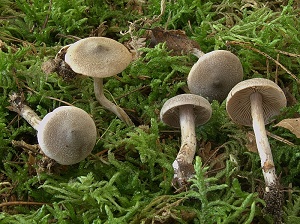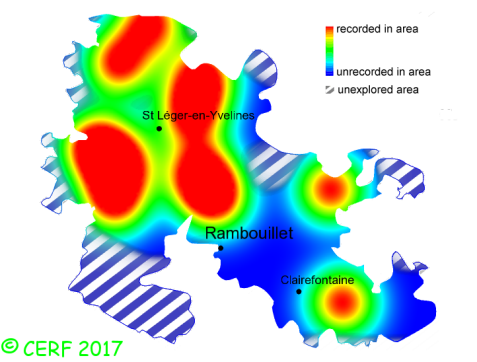| Cortinarius hemitrichus (Pers.:Fr.) Fr. |
|
|
|
|
|
|
The cap is cinnamon brown to grey-brown, conical when young, then expanded, with a sharp umbo. The cap surface is densely covered with small white flaky scales, disappearing with age, not viscid nor sticky. The stem is white to silver grey, with a ring zone (whitish belt). The flesh is brown, with shades of pink or purple, lighter when dry, unchanging; its taste is mild; the odour is very weak, spicy; its texture is fibrous. The gills are grey brown to cinnamon, then rusty red, adnate or emarginate, rather distant (nb of gills per 90° ~ 13 ). The spore print is rusty brown. This species is mycorrhizal. It grows on the ground, in broad-leaved or coniferous forests or in parks, on dry and poor soils, with birch. The fruiting period takes place from July to November.
Chemical tests : none. Distinctive features : cap and stem covered with white hair-scales (especially when young and dry); obtuse umbo; odourless (in particular, no pelargonium smell); with birch Cortinarius hemitrichus is quite rare and scattered in the forest of Rambouillet, and is frequent, more generally speaking . | ||
|
page updated on 14/01/18

